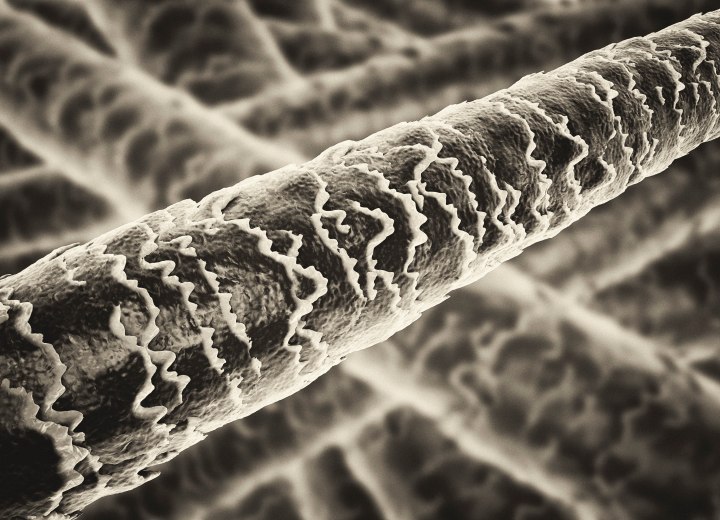How Many Bonds in Hair

A: I don’t know about there being 108 bonds in the hair. Personally, unless the source is discussing the individual bonds that may exist to link various molecules into the respective amino acids (of which there are 16) that exist in the hair, I cannot fathom the existence of so many different types of bonds.
Hair is formed from proteins that are produced in the hair follicle. As the hair cells mature, they fill with keratin, a fibrous protein. In the process of filling with keratin and traveling up the hair follicle, the cells die and lose their nucleus. As it emerges from the scalp, about 91% of the hair consists of protein.
This protein is made up of long chains of amino acids. As mentioned above, there are some 16 amino acids present in the hair in varying amounts. Each of these amino acid molecules is very small. In fact the average hair on the human head would be 10,000 keratin molecules wide. The amino acids are joined into peptide chains via a peptide bond.
The various peptide chains also join together to form polypeptide chains via polypeptide bonds. One cannot consider the number of either peptide bonds or polypeptide bonds without first knowing the length of the hair. In even the shortest of haircuts, there would be millions of individual bonds – whether peptide of polypeptide.
And that doesn’t consider the side bonds that bind the polypeptide chains. There are three main side bonds, two of which are physical in nature – meaning that they are broken and reformed through physical changes in the state of the hair. The two physical side bonds are salt bonds and hydrogen bonds. Both of these physical bonds can be broken using an application of heat and/or moisture, and reform with cooling and drying. This is what allows the hair to be styled to add curl or straighten the hair from its natural state. The physical side bonds account for 2/3 of the hair’s strength and elasticity in spite of the fact that they are the weakest bonds found in the hair. This is due to the sheer amount of salt and hydrogen bonds in the hair.
The other main side bond is a chemical side bond – so named because it requires a chemical reaction to break or reform – and it is called the disulfide bond because it links two polypeptide chains via cysteine sulfur atoms forming cystine (an oxidized form of cysteine). The disulfide bonds are the strongest of the side bonds although they are weaker than the peptide and polypeptide bonds.
There is one other bond in the hair that is little discussed. It is called van de Waal’s Forces. It operates on the theory that atomic groups are attracted to other atomic groups with similar structures. It accounts for the additional stability of the clusters of polypeptide chains and their adherence to one another. The van de Waal’s Forces have no effect on hairstyling, but it is useful to know that they exist.
So at this count, looking at different types of bonds in hair, we have two vertical-structure bonds, three side bonds and van de Waal’s Forces, if you add in the bonds that combine atoms into molecules, you are looking at perhaps seven different bond types. If you wish to count the NUMBER of bonds in the hair of all types, you are looking into the trillions of bonds. A single hair is approximately 500 billion to 1 trillion atoms across. These atoms combine into the amino acid molecules, which still number far greater than I care to actually count.
©Hairfinder.com